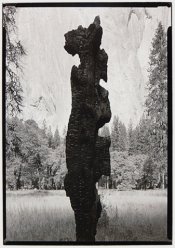Residual aberrations, some claim spherical aberration, but I wonder if that's the whole story, because even the Cosina "perfected" 50mm Classic Heliar seems to have this effect. What makes it more mysterious is that some Heliar photos look as 2D as a normal Tessar. I remember seeing an old photo of groups of dancers with a hill or mountain in the background, and the depth of field was enough to make the background sharp, but there still was "air" in the photo that gave that almost 3D effect.
The Heliar is claimed to have excellent "bokeh" (a term I don't like), something I don't agree with after using a couple of Heliars. The transition from sharp to unsharp isn't smooth either, as is often claimed. It's abrupt. The out of focus background looks busy and not that different from what you get with a Tessar or even a Planar.
Voigtländer Bergheil 6,5x9 with 4,5/105 Heliar at 5,6, APX 100, Rodinal 1+50.
https://live.staticflickr.com/3702/9384135320_575a7cfd48_b.jpg








